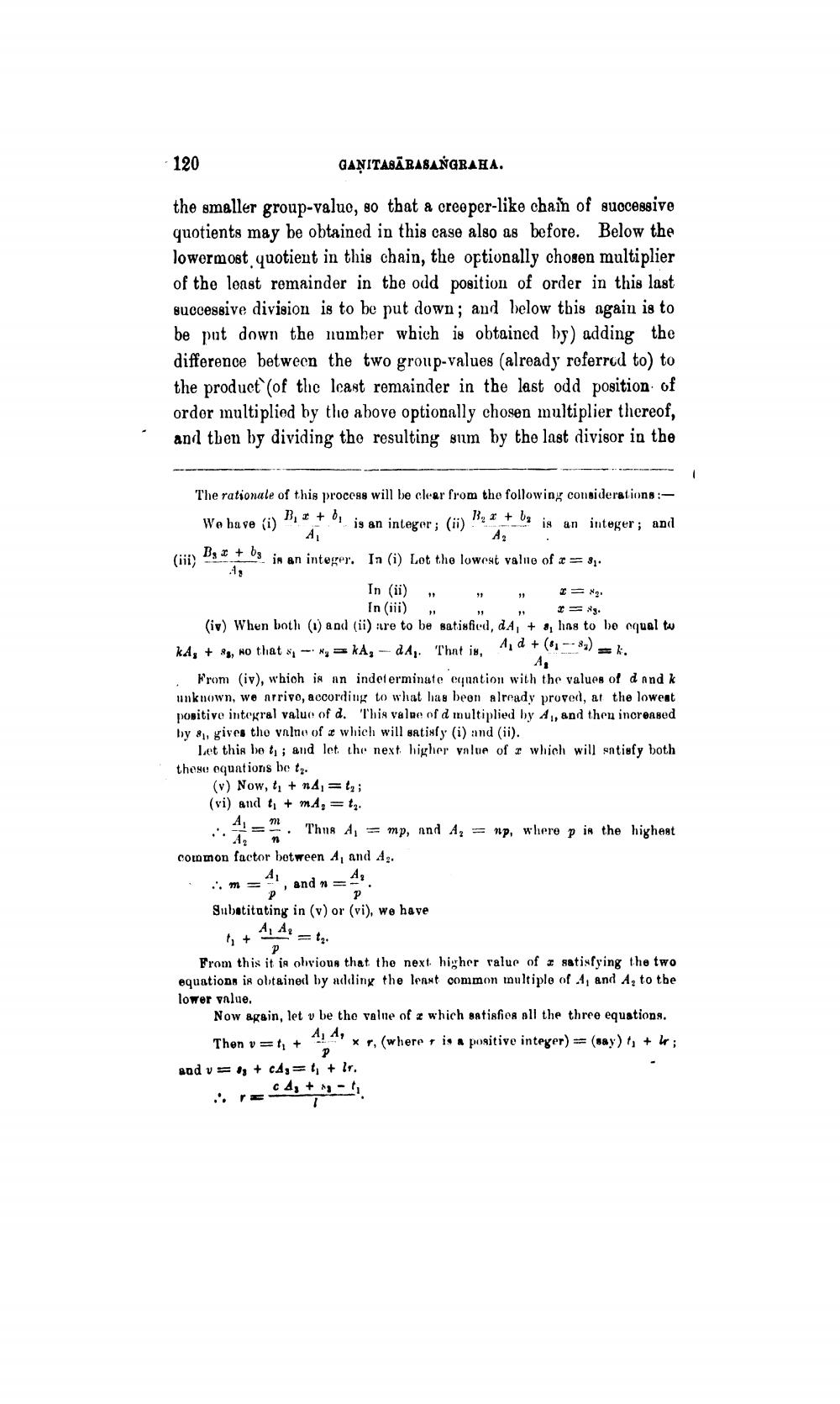________________
120
GANITASĀRASANGRAHA.
the smaller group-valuo, so that a creeper-like chain of suocessive quotients may be obtained in this case also as before. Below the lowermost quotient in this chain, the optionally chosen multiplier of the least remainder in the odd position of order in this last successive division is to be put down; and below this again is to be put down the number which is obtained by) adding the difference between the two group-values (already referred to) to the product (of the least remainder in the last odd position of order multiplied by the above optionally chosen multiplier thereof, and then by dividing the resulting sum by the last divisor in the
The rationale of this process will be clear from the following considerations :
B. + O, is an intever: (i) B:1 + is an integer; and
By x + og in an integer. In (i) Lot the lowest value of x=8
In (ii)
= 89 In (iii) . .
. (iv) When both (1) and (ii) : re to be satisfied, dA, + & has to be equal tw kA, + Ag, No that sy - Ny=kA, - A. That is 1.2 + (1 -- 8)
From (iv), which is an indeterminate cguntion with the values of dand k unknown, we arrivo, according to what has been already proved, at the lowest positive integral value of d. "This valpe of d multiplied by A, and then increased by , gives the valne of which will satisfy (i) and (ii).
Let this be t,; and let the next higher value of r which will satisfy both these equations be tz.
(v) Now, t, + 14 =ta; (vi) and ti + mA, = tz.
• Thus A, = mp, nnd Ag = np. where p in the highest common factor between A, and Az. cm = 4, and n=4
pen Substitating in (v) or (vi), we have
Tp
From this it is obvious that the next higher value of satisfying the two equations is obtained by adding the least common multiple of .4, and A, to the lower value. Now again, let v be the value of 2 which satisfios all the three equations.
+ 4,4 x . (where is a positive integer) = (say), + Ir;
" P and v=ny + CA,= t; + lr.




